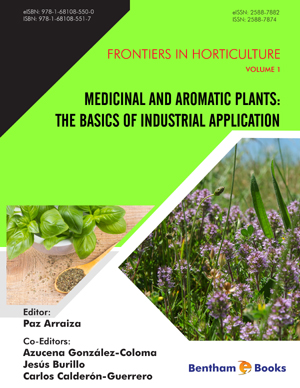Abstract
Parasitism is a phenomenon of widespread importance among angiosperms and there are at least
five orders having parasitic species (Musselman, 1982) that evolved independently in 20 plant
families (Musselman, 1987) and comprising 3000-5000 species (Musselman, 1987; Sauerborn,
2001). Almost 4200 species of haustorial parasitic plants are spread in the world, representing just
over 1% of all flowering plants. Nickrent (2002) reported that the total number of parasite species
is not distributed evenly among the 18 families or 274 genera. Aly (2007) reported that about 20
families (3,000–5,000 species) of higher plants are parasitic in the plant kingdom and may cause
production losses of 30–80% in staple food and industrial crops in every continent. Westwood et
al. (2010) mentioned parasitic weeds include approximately 3,900 species included in more than
20 plant families consist the important genera Striga, Orobanche and Cuscuta. FernándezAparicio et al. (2011) reported at least 4500 plant species within 270 genera in over 22 families
predominantly angiosperms rely on a parasitic association with a host plant for their mineral
nutrition, water and/or carbon supply. Heide-Jorgensen (2013) mentioned that the total number of
world parasitic plants account for 4500 species present in 275 genera of 28 botanical families.
However, in a recent molecular study, Nickrent (2020) reported the occurrence of 4700 species
that belong to 290 genera of parasitic angiosperms. Approximately 30 genera of these parasites
have been reported to negatively impact cultivated crops, while only about 11% of all genera have
members that could be considered pathogenic. Parasitic species belong to different plant families
and are either root or shoot parasites, attack plants of different botanical families and growth forms
and are distributed in different geographical regions of the world. They cause great yield losses
and a heavy infestation can negate yield and lead to complete crop loss. Some parasites are
regarded as highly damaging agricultural pests that exert significant threats to regional and global
commodity and food production (Cudney et al.1992; Aly 2007; Parker 2012). However, out of
plant families that have parasitic species, six were considered of great economic importance,
including Scrophulariaceae, Orobanchaceae, Santalaceae, Cuscutaceae, Viscaceae and
Loranthaceae. Other researchers also added Lauraceae and Balanophoraceae (Subhashini et al.,
2019). In general, Cuscuta, Arceuthobium, Orobanche, and Striga were regarded as causing the
most damage to economic host crops.












